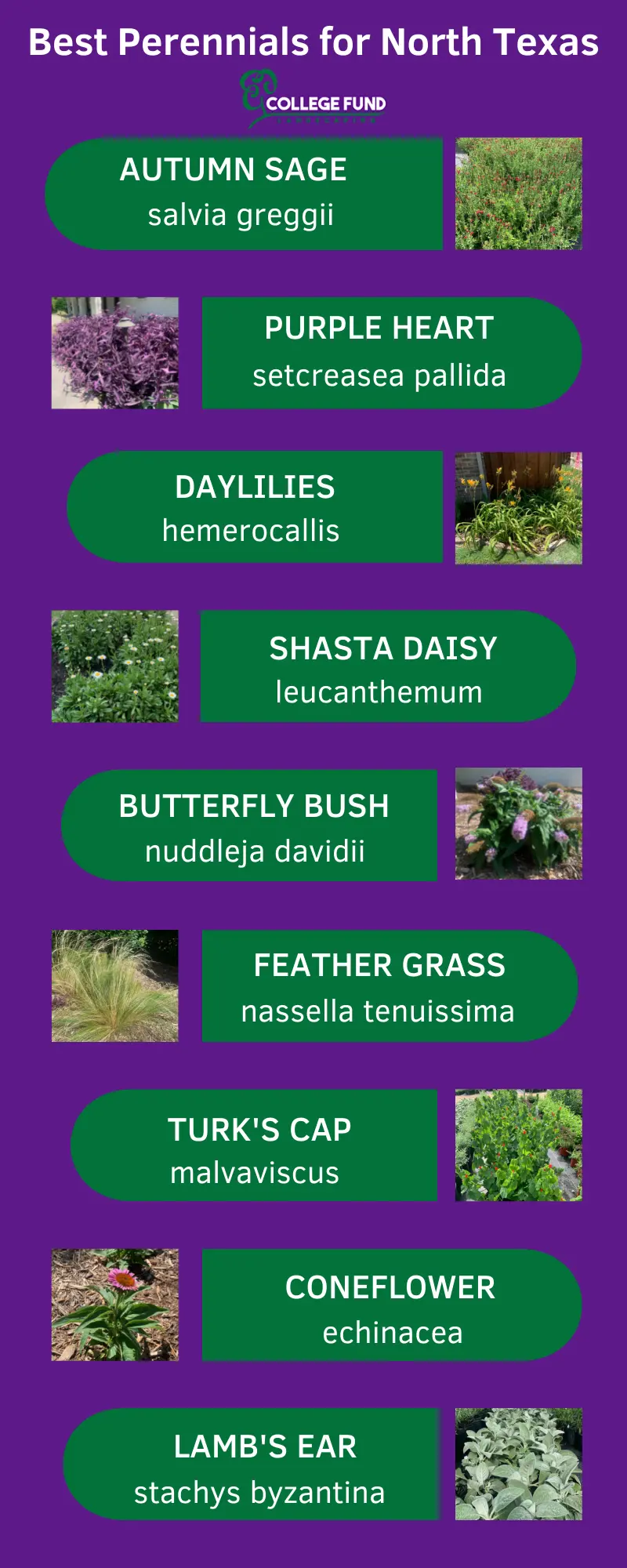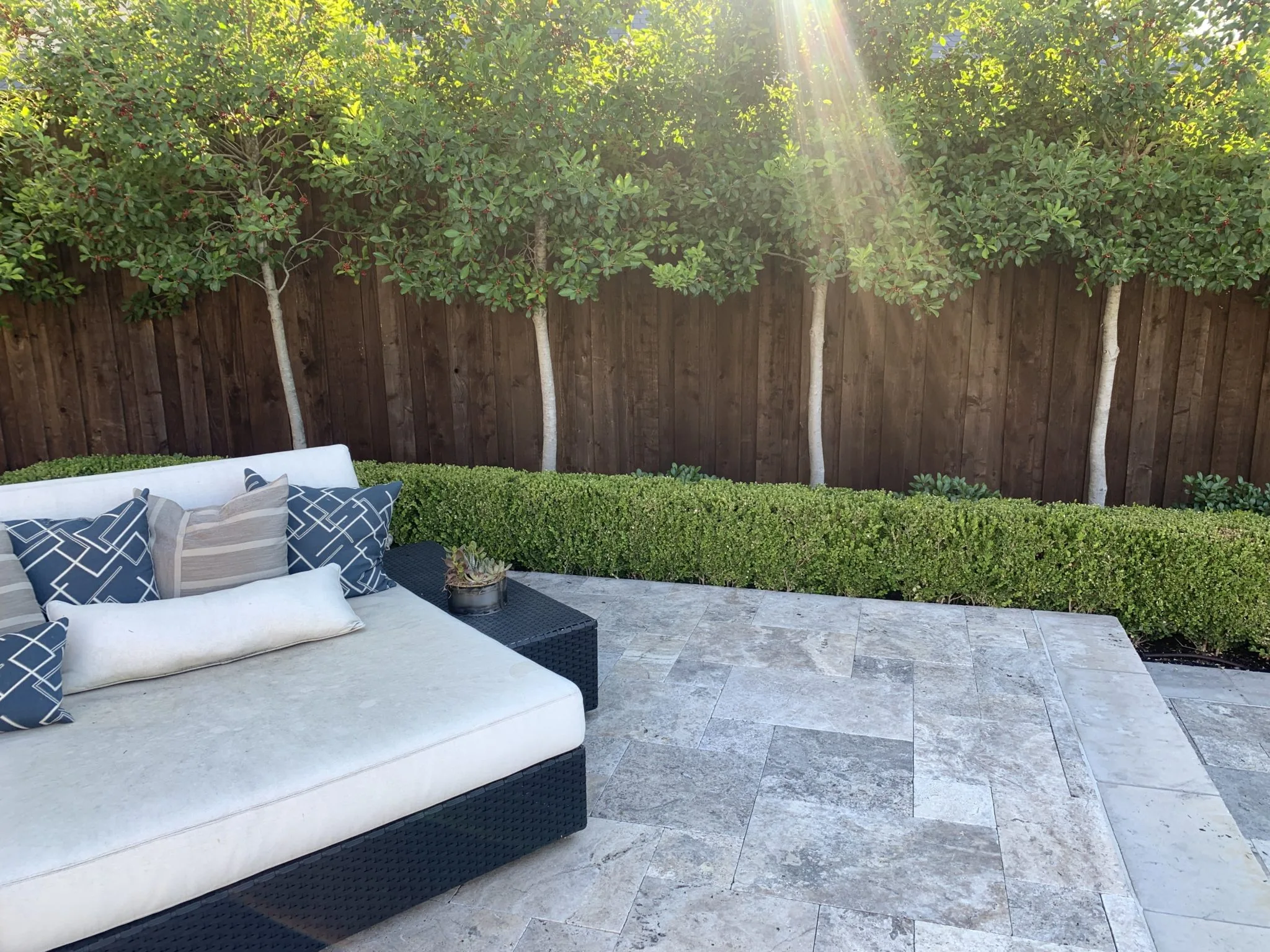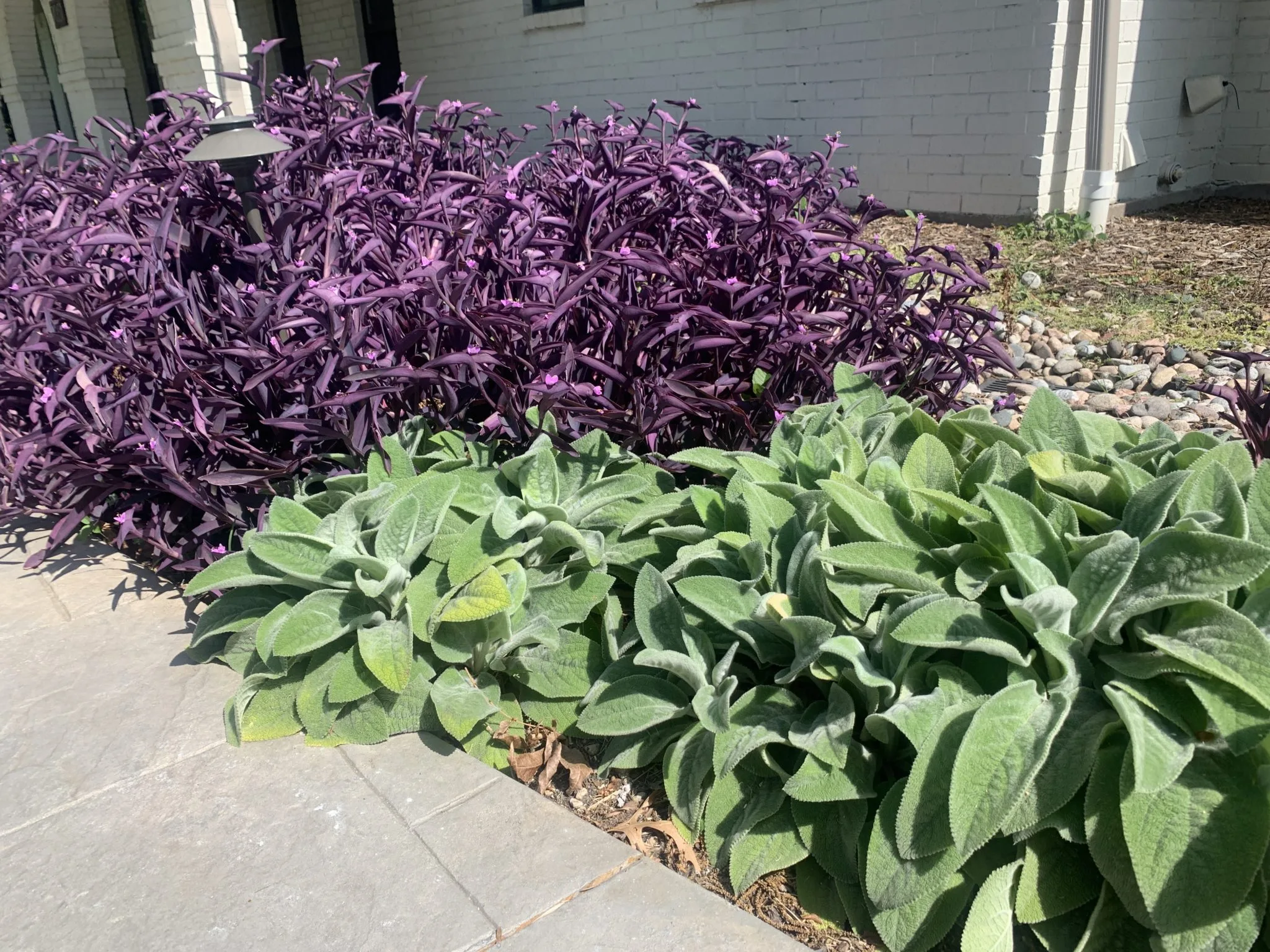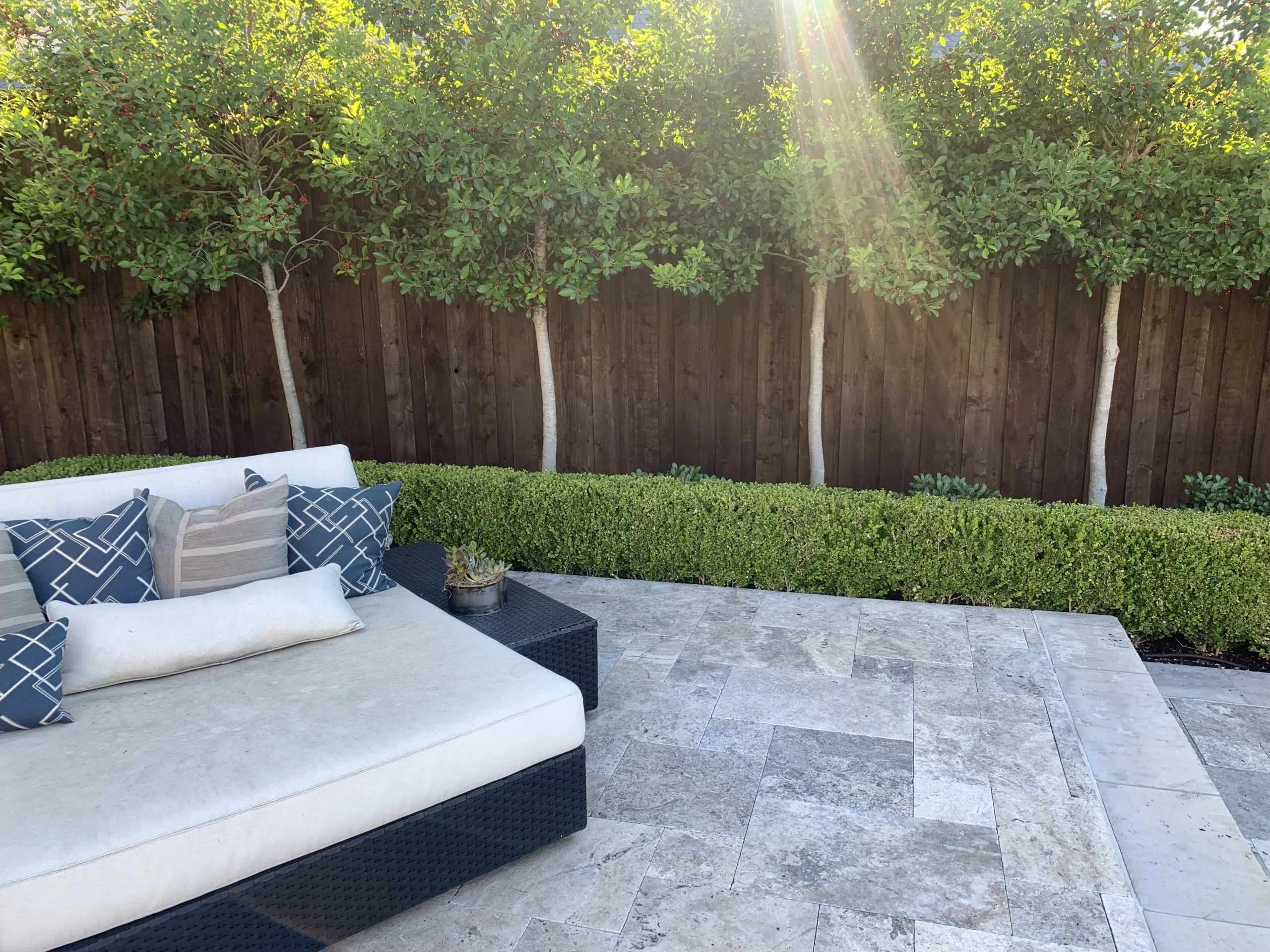From Deep Freeze to Opportunity
Did your landscape take a beating over the winter? If you’re noticing the loss of some plants, you’re not alone. Texas experienced a one-hundred-year temperature event that nobody wants ever to go through again: A deep freeze. The snow, sleet, freezing rain, and horribly cold temperatures that Mother Nature sent us in the winters of 2020 and another hard freeze in 2021 were too much for some landscapes to take.
As uncomfortable as those temperatures are for us, they’re even worse for our landscapes. Our customers have lost Hawthorns, Penstemon, and other plants that are naturally (and normally!) hearty in our Texas winters.
If your landscape is still suffering from dead plants due to the cold freezes, we have some helpful guides below on popular plants and tips on how to replace them.
How to Fill Those Landscape Holes
Recently, we’ve started fielding calls from customers as they’ve now noticed dead or missing plants from their landscape. The first inkling that many people have is to simply replace those plantings. And yes, that is always possible, there are also alternative approaches.
When events like this happen, we like to think of it more as an opportunity to do a true landscape refresh. Instead of just filling in the dead spot, perhaps a better idea is to take a step back and look at the broader picture?
This is a prime opportunity for a landscape redesign. Whether you’re interested in a more updated or contemporary design, adding in plantings that may not have been available when your landscape was installed or you’re simply tired of looking at what you have, we can help.
Top Perennials for North Texas Landscapes
Here are the best perennials we are currently installing now. We’ve included the mature size of each plant which is necessary to know when planting so that you don’t end up with an overgrown garden in a short period of time.
Furman’s Red Autumn Sage
Salvia greggii ‘Furman’s Red’
- Fast growing to 2 to 3 ft. high and wider.
- Easy to manage flowering perennial. Flowers from mid-March/April to first freeze. Cut back to 3-6 inches in winter to allow for thick plant next spring. Great in full sun, will not flower as well in shade
Purple Heart
Setcreasea pallida
- Quickly reaches 12 to 18 in. tall and wide.
- Wonderful color pop. Will propagate easily and spread outside of the intended area, however, you can cut it simply with your hand to keep it inside the intended area. Cut back to the bare ground after the first frost
Daylilies
Hemerocallis
- Moderate growing; foliage reaches 1 ft. tall; flowers reach 2 ft. tall.
- Several color varieties flower at different times in the spring depending on the cultivar. When not flowering provided accent in the form of a tall bunch of green blades
Shasta Daisy
Leucanthemum
- Compact habit; quickly reaches 15 in. tall and wide.
- Tall beautiful perennial that loves full sun. Cut back to 3 inches in winter
Mexican Feather Grass
Nassella tenuissima
- Forms airy clumps 12 to 24 in. tall and as wide; 30 in. tall in bloom.
- Great for xeriscaping and the southwestern look
Dwarf Summer Lilac or Butterfly Bush
Buddleja davidii or tutti fruitti
- Quickly reaches 2 ft. tall, 2 to 3 ft. wide.
- These are the dwarf varieties of the butterfly bushes. Blooms from April – first frost. Deadhead blooms to get more flowers however this is not necessary.
Turk’s Cap
Malvaviscus
- Fast grower to 6 ft. tall, 4 to 6 ft. wide.
- great perennial when you need some height
Coneflower
Echinacea
- Quickly reaches 16 to 20 in. tall, 12 to 16 in. wide.
- Get flowers without having to replant every year!
- Many colors and varieties
Lambs ear
Stachys byzantina
- Quickly reaches 6 to 12 in. tall, spreading 12 to 24 in. wide.
- Good for when you need something low to the ground. Can wilt out during hot months

Top Shrubs for North Texas Landscapes
Here are the best shrubs we are currently installing now:
Abelia
Abelia x grandiflora
- Moderate growing; reaches 4 to 5 ft. tall and wide.
- canyon creek & twist of lime varieties
- Colorful leaf in a shrub. Has a flower in the spring but is not showy. Use for the color of the leaf
Vicary Golden Privet
Ligustrum x vicaryi
- Quickly reaches 8 to 10 ft. tall and wide.
- Got to be my favorite of all. Gives you a pop of color in an evergreen shrub. Can be maintained as a hedgerow or allowed to grow free form
Dwarf Yaupon Holly
Ilex vomitoria
- Slow growing; reaches 2 to 3 ft. tall, 4 ft. wide.
- Some may say boring. I say reliable and hardy. Great for hedgerows, covering utilities, and a no-nonsense plant that will last
Soft Caress Mahonia
Mahonia eurybracteata ‘Soft Caress’
- Grows to 3 ft. tall and 3-4 ft. wide.
- Great shade plant that has an interesting leaf pattern to provide a different look
Indian Hawthorn
Rhaphiolepis
- Moderate growing; reaches 2 to 2 1/2 ft. tall, 3 to 4 ft. wide.
- A lot of these died in the freeze, however, we do not think a 1 in a 100-year event should ruin this plant’s great history in north Texas! Flowers are better if never trimmed. Once it is maintained as a hedge it rarely flowers, however, can still work in landscape. Simply plan your maintenance based on your desires for the plant
- Recommended varieties: Clara and Pink Lady
Harbor Belle Heavenly Bamboo
Nandina domestica ‘Jaytee’
- Dwarf habit 1 to 2 ft. tall and wide.
- Need something more than green leaves? These two dwarf variety nandinas will provide color year-round. A good middle-level layering plant when trying to go tall, medium, and low height in your landscape beds
Dwarf Pittosporum
Pittosporum tobira ‘Shima’
- Slow growing; reaches only 24 to 30 in. tall and wide.
- We recommend crème de mint & variegated varieties
- Lost a lot of these in the freeze too, however still one of my favorites. The standard variegated will get 4-6 feet tall while the dwarf crème de mint will be half of that.
Color Guard Adam’s Needle
Yucca filamentosa ‘Color Guard’
- Fast growing; reaches 3 to 4 ft. tall, 4 ft. wide.
- Yuccas – recommended varieties: color guard, red, soft
- Wonderful native plants. Do not overwater or they will have wilting leaves, great in dry areas of the landscape
Pringles Dwarf Podocarpus
Podocarpus macrophyllus ‘Pringles Dwarf’
- Reaches 3 to 5 ft. tall, 6 ft. wide.
- Need a variety in leaf shape or have partial sun in a shady area. These will fit the bill
Boxwood ‘Winter Gem’
Buxus microphylla var. japonica ‘Winter Gem’
- Reaches 4 to 6 ft. tall and wide.
- Like a plant that holds a sculpted look? This is the dwarf variety that will fit the bill.

Planting Tips For Your New North Texas Landscape Design and Install
Once you’ve decided on the plants you’d like to use, you’re almost ready to get those babies in the ground. We have a few tips for success.
Know the Mature Size of Your Plants
When designing a new landscape keep in mind the size of your desired plants at maturity, NOT the size they are when at the nursery. Many times we see installations that look good the first year but are then quickly overgrown leaving the plants bunched together. Unless you have the budget to install 7-15 gallon mature plants, the first few years of a landscape may look sparse as the plants fill into the appropriate size.
Start with a Clean Slate
After the epic freeze in 2020 we are seeing many homeowners, try and replace only the plants that died. It is difficult to allow a consistent flow and good design when you are starting fresh in some areas and brand new in others. Our typical rule of thumb is if 50% of your plants died, it is better to start over and design a new landscape from scratch. This way everything will grow as intended and you are not just plugging holes that will end up springing a leak again later
One exception to this is anchor plants. If your large anchor plants like crape myrtles, vitex, little gem magnolias, Savanah hollies, etc are fine, it is easy to incorporate these into a new landscape.
Always Till the Beds
This goes in conjunction with starting with a clean slate. In order to properly amend the beds with new compost and pro bed mix, we recommend tilling all the beds to a minimum depth of 6 inches. It’s hard to get a good soil tilling when you are working with existing plants and trying to till around them. You’ll end up with a new healthy soil area next to a compacted existing planted area.
Amend the Beds With Quality Top Soil
Your plant’s success will greatly depend on adding a good blend of compost. Unfortunately, many homebuilders often skip this step when they are installing plants. Compost is a key component to plant growth and longevity. Do not skimp here, however, do not add too much and cover the weep holes in your home or you may have a flooding issue.
Consider Adding Underground Drainage Extension to Your Gutters
This will allow the mulch to stay where it is intended and not create wet and dry areas in your landscape, resulting in struggling plants.
Play With Hardscape Accents to Really Make It Pop
Many times we are trying to create a layered look. Tall plants are followed by medium plants, with small plants in front. Not all landscape beds can accommodate three layers of plants and not look forced. Don’t forget you can utilize Colorado river rock, decomposed granite, or Texas black star to allow for height and variety in your beds.

After Your Landscape Refresh Remember This
Whether you’ve chosen just to replace the plants or do something a little more involved, we have some great tips to ensure that your new plants take to their new home:
- Never plant and forget: If a problem occurs, it’s likely to show itself in the first few days after planting. During the first two weeks, check your plants every few days (or even more, if you’re so inclined). After that first period, you can space those visits out but, guess what…
- You’ll need to water regularly! This is the time when any new members of your landscape need deep watering. An easy way to know if your plants need a good drink is to dig around the root zone with your fingers. The larger the plant, the deeper you’ll want to dig. If it feels dry, it’s time to water! If it feels moist, skip it.
- Order the right irrigation for your plants. While the easiest way to water is to set up a sprinkler or use an in-ground installation system, during these first few weeks, your new plantings will benefit most from slow and deep watering. The best way to do this is to use a garden hose, put it at the base of the plant, and turn the faucet on a slow trickle. This helps to provide deep watering without oversaturating the surface.
- Watch them become part of your new landscape. Once this initial period has passed, the need to water and smother them with TLC decreases over time. While this is also weather dependent, you can space out the frequency in which you water.
Fortunately, opportunities like these don’t come around very often, but there’s definitely a silver lining if you lost a few members of your landscape over the summer.
College Fund Landscaping offers landscape design and installation services. We’re not talking a shrub and a bush here – we can take care of a whole, new project from start to finish. Give us a call – we’d love to discuss some ideas with you!
Click here for our full, comprehensive plant list.



Comments (0)
Thanks for your comment!
Thanks for your feedback! Your comments have been successfully submitted! Please note, all comments require admin approval prior to display.
Error submitting comment!
There is a problem with your comment, please see below and try again.